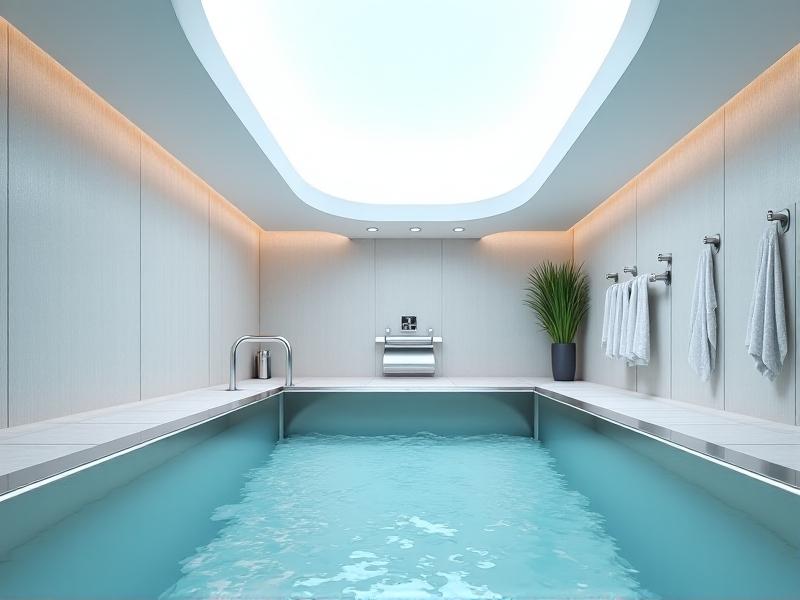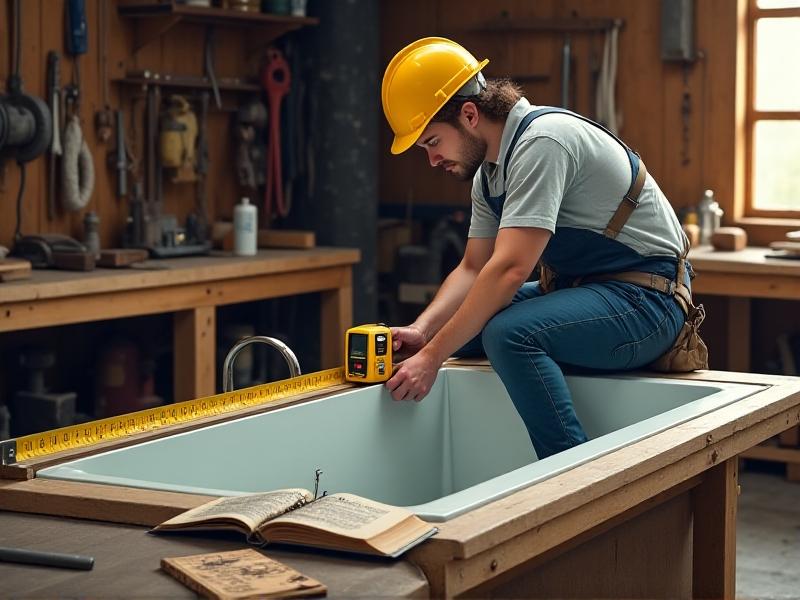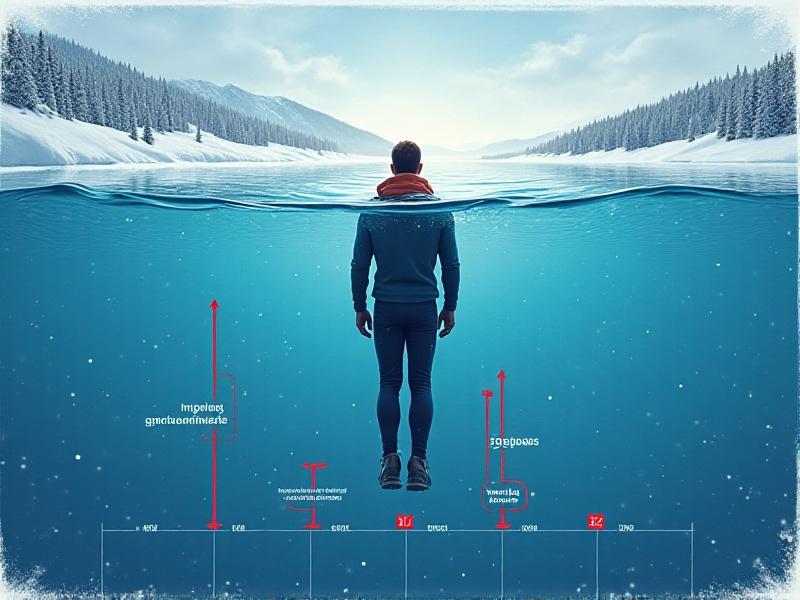Water Displacement Calculations for Plunge Tubs
Introduction to Water Displacement in Plunge Tubs

Plunge tubs, often found in spas, athletic facilities, and luxury homes, are designed for hydrotherapy, recovery, and relaxation. A critical yet overlooked aspect of their installation and operation is calculating water displacement. When a user enters the tub, their body displaces water, affecting the tub’s capacity, safety, and functionality. Understanding this phenomenon ensures the tub’s structural integrity, prevents overflow, and optimizes user experience. This article explores the science, methods, and practical applications of water displacement calculations, offering actionable insights for designers, installers, and enthusiasts.
Understanding the Physics of Water Displacement

Water displacement is governed by Archimedes’ principle: any object submerged in fluid displaces a volume equal to its own. For plunge tubs, this means a user’s body weight and shape determine the water volume displaced. Density plays a role—since the human body is slightly less dense than water, not all submerged mass translates directly to displacement. However, for practical purposes, displacement volume (in liters or gallons) can be approximated by body weight. A 70 kg person, for example, displaces roughly 70 liters of water. This principle informs how much the water level will rise and whether the tub’s design can accommodate it without spillage.
Key Formulas for Accurate Calculations

The fundamental formula for displacement is V = L × W × H, where volume (V) equals length × width × height. However, plunge tubs often have irregular shapes, requiring integration or geometric approximations. For rectangular tubs, calculate the initial water volume and add the displaced volume from the user. For cylindrical tubs, use V = πr²h. Advanced scenarios might involve calculating displacement caused by multiple users or accessories like steps. Always factor in the tub’s maximum fill line and drainage capacity to avoid overpressure on seals and joints.
Step-by-Step Guide to Measuring Displacement

Start by measuring the tub’s internal dimensions. For rectangular models, record length, width, and initial water height. Multiply these to determine baseline volume. Next, estimate the user’s displacement using their weight (1 kg ≈ 1 liter). Add this to the baseline to find the new water height. For accuracy, conduct a real-world test: mark the water level before and after a user enters the tub. Measure the difference and compare it to your calculations. This hands-on approach helps account for variables like posture and water temperature, which can affect buoyancy.
Common Mistakes and How to Avoid Them
A frequent error is neglecting the tub’s fill line. Even a correct displacement calculation becomes irrelevant if the tub is filled to the brim before use. Others include overlooking tapered designs (e.g., narrower bases) and forgetting to convert units (e.g., inches to centimeters). To mitigate errors, always verify measurements twice, use manufacturer-provided capacity charts, and simulate displacement with sandbags or weights during testing phases. Additionally, consider the water’s thermal expansion—heated plunge tubs may expand water volume by up to 3%.
Applications of Displacement Calculations in Design
Displacement data informs critical design choices, such as drain placement, overflow systems, and structural supports. For instance, a commercial plunge tub meant for multiple users requires wider overflow channels to handle simultaneous displacement. Designers also use these calculations to select appropriate filtration systems—undersized pumps struggle to manage the increased water volume during peak usage. In outdoor installations, displacement metrics help engineer slopes and drainage around the tub to prevent flooding.
Tools and Software for Simplifying the Process
Advanced tools like SolidWorks or AutoCAD can model displacement effects in 3D, while free online calculators simplify basic scenarios. Hydrodynamics software, such as Flow-3D, simulates fluid behavior under different conditions, predicting turbulence and pressure points. For quick estimates, mobile apps like iWaterDisplace use augmented reality to measure tub dimensions and calculate displacement in real time. Pair these tools with analog methods—like displacement bags for calibration—to balance precision and practicality.
Maintenance Considerations Post-Installation
Regular maintenance ensures displacement calculations remain valid over time. Inspect seals and joints for wear, as leaks alter the tub’s effective capacity. Monitor water chemistry—mineral buildup can reduce interior volume, subtly changing displacement dynamics. For heated tubs, check thermostats to prevent excessive thermal expansion. Keep records of user feedback; for example, frequent overflows might indicate a need to recalibrate fill levels or upgrade drainage.
Case Study: Real-World Example of Effective Calculation
A boutique spa in California faced persistent overflow issues in their oval-shaped plunge tub. Engineers discovered the original calculations assumed a rectangular shape, leading to a 22% error in displacement estimates. By recalculating using elliptical volume formulas (V = π × a × b × h, where a and b are the radii) and adding a secondary overflow channel, the spa eliminated spills and reduced water waste by 15%. This case underscores the importance of geometry-specific calculations and iterative testing.
Final Thoughts on Optimizing Plunge Tub Performance
Accurate displacement calculations blend science, practicality, and attention to detail. Whether designing a compact home tub or a commercial spa installation, prioritize precise measurements, leverage modern tools, and anticipate real-world variables. By doing so, you create a safe, efficient, and inviting space where users can immerse themselves without hesitation—or unexpected splashes.








